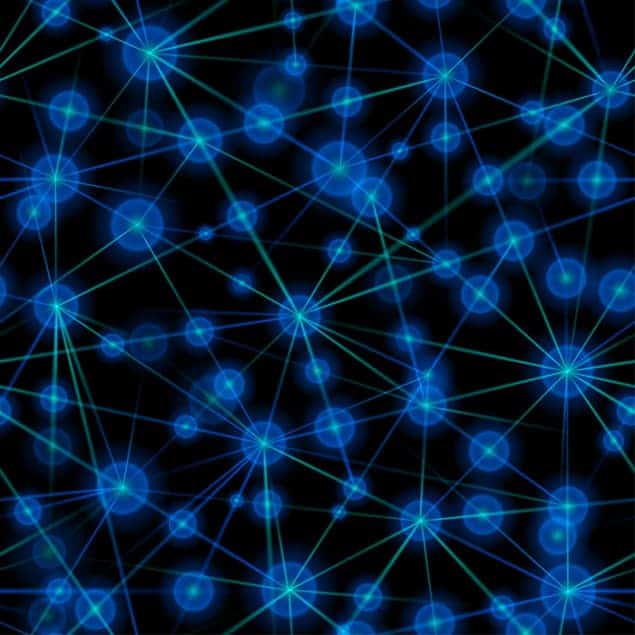
Light in an optical fibre has been slowed to a virtual standstill for the first time by a team of physicists in France and Austria. The technique makes use of an effect called electromagnetically induced transparency (EIT), which normally occurs in clouds of atomic gases. The discovering could provide a practical solution to the vexing problem of how to build quantum memories for use in quantum-information networks.
Slow light has been an active area of research since the late 1990s, when researchers discovered that a control laser tuned to a certain frequency will excite a gas of atoms into an energy state in which the atoms can no longer absorb a light signal from another source. When the control laser is off, the atoms can absorb light, making the material opaque to the signal. When the laser is on, no light can be absorbed, and the gas becomes transparent to the signal. This is EIT, but there is more to it than just that. In 2001 researchers discovered that if the control laser was switched off while the light signal is in the gas, the signal could be brought to a standstill for a fraction of a second. Then the signal would resume its motion when the control is switched back on again.
Attractive collective phenomenon
Technically, it is not the light’s photons that are slowed but rather the envelope of their collective wave, which is represented by the photons’ “group velocity”. Nonetheless, slow light immediately became an attractive phenomenon to exploit for quantum networks, which are used to transmit information in such a way that it is fundamentally secure from eavesdroppers. Quantum information is corrupted as soon as it is measured, and therefore quantum memories must store information without actually reading it in any way. Slowing down light – the usual carrier of quantum information – is an ideal solution.
However, in most communication networks – quantum or conventional – light is not sent through clouds of atoms in free space. For that reason, Julien Laurat and colleagues at the Université Pierre et Marie Curie in Paris decided to test whether slow light could also be demonstrated inside the most common propagating medium: optical fibres. Laurat explains that using fibres would make the memories more compatible with existing optical-information technology. He also points out that because the light is contained in fibres, there is no need for mirrors, lenses and other components that can make free-space optical systems unwieldy.
Thinned fibres
Laurat and colleagues began by elongating an optical fibre until its diameter was less than half a micron. They insert this thinned portion inside a vacuum chamber, which is filled with a cloud of approximately 2000 laser-cooled caesium atoms. Another laser switches the caesium atoms between their opaque and transparent states.
The dimensions of the fibre are crucial to the experiment’s success – because it is thinner than the wavelength of the guided light, about 40% of the light’s energy propagates outside the fibre, in a so-called evanescent field. By interacting with this evanescent field, the atoms can slow and stop the guided light for several microseconds, even though none of the atoms are actually inside the fibre.
Mikhail Lukin, a physicist at Harvard University in Massachusetts, US, who studies slow light, is impressed with the research. He told physicsworld.com that “It combines several previously demonstrated phenomena and techniques to take another step towards making quantum-memory techniques robust and practical.”
Fruitful theory
Anil Patnaik, a physicist at the Air Force Research Lab at Wright-Patterson Air Force Base in the US who first proposed the fibre-optic method with others while working at the University of Electro-Communications in Tokyo in 2002, says it is “exciting” to see his old group’s theory bear fruit. “We knew it was challenging, but the rewards were worth taking the challenge…I still remember the excitement when my calculations showed that [about] 50% of the energy could be available as evanescent field to couple to a medium right outside the fibre,” he adds.
Laurat and colleagues’ demonstration comes alongside a similar experiment by Arno Rauschenbeutel and colleagues at the Vienna University of Technology. Instead of employing a magneto-optical trap to contain the atoms inside the vacuum chamber, as Laurat and colleagues did, Rauschenbeutel’s group employed a dipole trap, which requires the use of another laser. In principle, a dipole trap should improve the atoms’ “optical depth”, or their ability to absorb light – a dimensionless parameter that defines how well a quantum memory can read and write information. In practice, both the French and Austrian groups recorded roughly the same optical depth: about two. “Increasing the optical depth is an important direction,” says Laurat.
Ian Walmsley, a physicist at the University of Oxford in the UK, says that the research is a “good step” along the way to a full quantum memory. He adds that the successful “implementation of the new scheme is very promising”, and that the next step “will likely be to test the noise level, and to store true single-photon states: then it will be fully ready for applications”.
Laurat’s research is described in Physical Review Letters and Rauschenbeutel’s work is in Optica.



